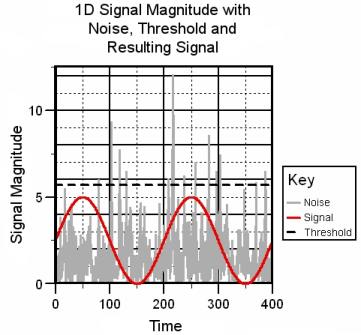

Stochastic resonance is a physical process that has a known mechanism and produces predictable and distinctive outcomes. The necessary components are a threshold, a sub-threshold signal and added noise. Noise of a negative exponential distribution is added to the signal and then the threshold is applied to the result; only points that cross the threshold are viewed, and in this case they produce a sunspot.

A good example of 1D of threshold filtering stochastic resonance uses a signal of a sin wave. In this example the sin wave is propagated in time (of arbitrary units) and noise with a negative exponential distribution is applied. A threshold is applied above the highest possible signal value (and again in arbitrary units).
It can be applied to greyscale images; the technique can be considered an imaging processing technique. The results of the process can be mistaken for greyscale however the resulting images only have black or white pixels.
As the standard deviation of the noise increases features of different spatial frequency are highlighted. A photo of Big Ben is a good example as it has many features with varying spatial features.

An example of Threshold Filtering Stochastic Resonance using a greyscale image of Big Ben, the greyscale values range from 0-255 and is shown on the left. To the right of this is a series of images produced by threshold filtering stochastic resonance with noise profiles with a mean of 0 and with standard deviations of 80, 185, 500, 700, 1000 and 2000. The threshold value of 300 was used for all cases.
Last updated by Joanna Leng on the 14th of August 2011.